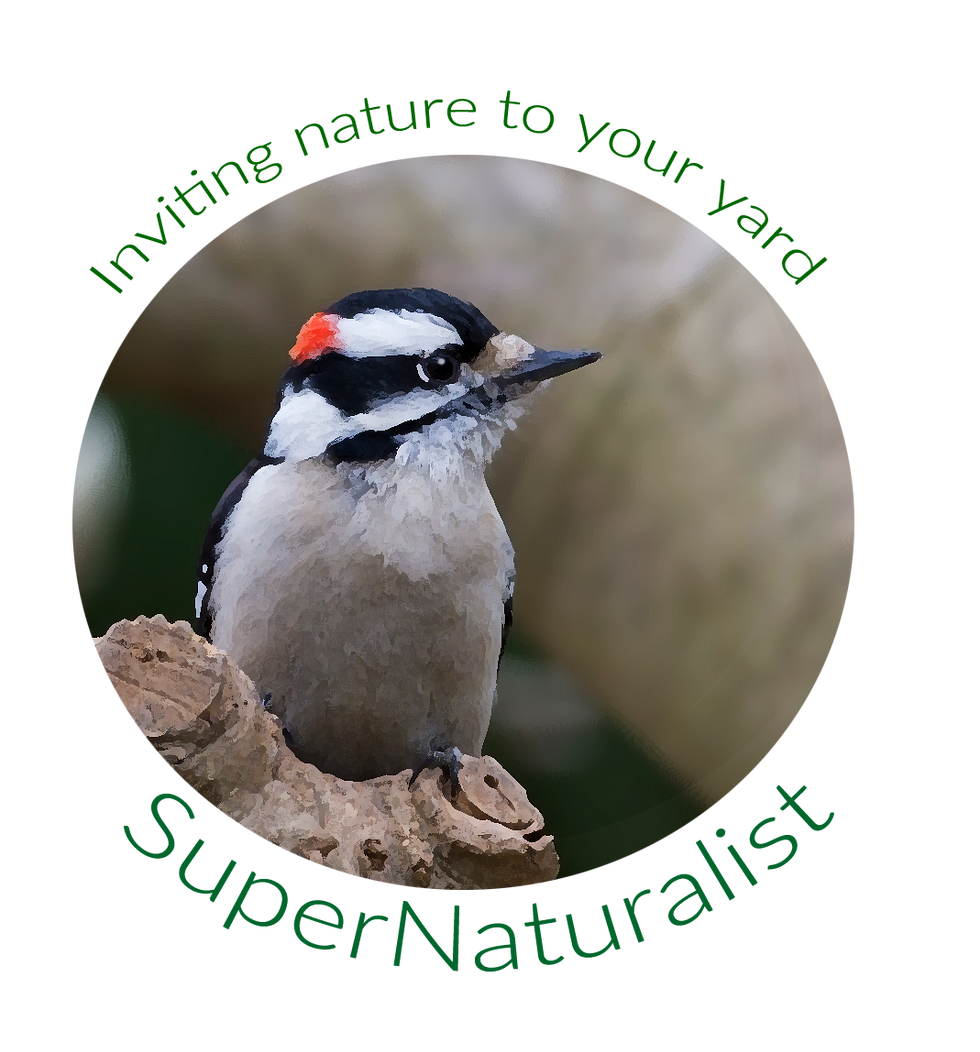The best approach to attracting birds to your yard is transforming your property into what Margaret Roach calls "one giant, living bird feeder." Feeders, wild berries, and a reliable water source will help your birds thrive throughout the winter,
Feeders
Birds will visit your feeder throughout the year, but winter is the critical period for keeping your feeder stocked.
The "Squirrel Buster" with a cardinal ring is my favorite feeder. To prevent rodents from raiding your birdseed, the Squirrel Buster blocks access to the feeding holes when an animal heavier than a songbird mounts the feeder. The cardinal ring allows ground feeders, such as cardinals, access to the feeder.

Female cardinal gives me "stinkeye" as she perches on the cardinal ring of the "Squirrel Buster".
Step 1: Find an ideal location to hang your feeder
Always place bird feeders where you can see the birds you are feeding. Start the search for a feeder location from inside your home. Ideally, you will find a sturdy tree branch:
In a sheltered area
At an edge of the yard
Visible from your breakfast table

Nuthatch enjoying a safflower seed
Step 2: Hanging the feeder
To avoid deer and squirrel raids, hang the feeder at a minimum height of six feet. Protect the feeder's top from squirrels by adding a domed squirrel baffle above the feeder. Attach the unit to a tree branch with a three-foot wire (vs. rope).

When your feeder is less than six feet high. Check out the cheeks!
Step 3: Seed mix
Choose mixtures containing black oiled sunflower seeds, millet, and cracked corn. This mix eliminates the need for a platform feeder. Nuthatches and woodpeckers foraging for sunflower seed will toss the millet and corn to the ground where juncos, mourning doves, and cardinals prefer to feed.
Here is a detailed chart matching songbirds to their favorite foods.
Pro tips:
After the holidays, secure your Christmas tree to the base of your birdfeeder tree. The Christmas tree offers birds safety and warmth while awaiting their turn at the feeder.
If you hang more than one feeder, choose a different location to reduce congestion at the main feeder.
For best photographs, capture birds before they jump to the feeder. Bird photos with feeders or birdhouses in the frame spoil the spontaneous "untamed wilderness" of the shot.

White-throated sparrow waits for his turn at the feeder in our re-purposed Christmas tree.
Words of caution
Avoid wooden feeders; within a week, you will have a squirrel head-sized hole in your feeder. Accept that squirrels will get some of your seed. With adequate precautions, squirrels will be content to forage the seed thrown to the ground by birds at the feeder.
Do not keep seed for more than a year. Expired birdseed is prone to dangerous mold and fungus outbreaks.
To protect seed from rodents, store birdseed in a metal container.
Keep feeders away from the house.
-Feeders too close to the house may cause window strikes (birds flying into windows).
-The discarded seed attracts rodents.

Gray Squirrel smirks at me after tipping over my feeder
Suet Feeders
Woodpeckers, bluebirds, titmice, and nuthatches love suet!
Tips:
Use a suet cage feeder.
To avoid squirrels:
-Attach the suet feeder under the squirrel dome and above the feeder.
-Avoid suet mixes with seeds and nuts.
*Suet mixes made with hot pepper deter squirrels but do not bother the birds.
Control portion size to prevent gluttonous birds from dominating the feeder. I cut the standard suet cake into six even portions and add one piece per feeding.
Store the unused suet in a plastic bag in the freezer between uses.

Bluebird eating hot pepper suet
Wild Seeds and Berries
Here is where landscaping choices matter. Native shrubs that bear berries are a staple winter food source for songbirds. Spicebush, red cedar, beauty berries, winterberry, and holly are attractive landscape additions that are also essential winter food sources for birds, such as bobwhite quail, robins, cardinals, catbirds, finches, mockingbirds, thrashers, and towhees.
Left to right Winterberry, Beauty Berry, and Pokeweed
Native plants such as pokeweed and Virginia creeper provide seasonal color and produce berries that feed bluebirds, thrushes, and warblers. Finally, defer your flower bed clean-up until spring to allow finches and native sparrows to eat the seeds of black-eyed Susan, coneflower, sacred basil, goldenrod, and anise hyssop. The thicket provided by your flower garden remnants provides cover for birds to forage for seeds.
Keep cats indoors
Domestic and feral cats kill hundreds of millions of birds annually in the United States. Because domestic cats are not native to North America, our native birds are often defenseless against them. If your feeder is visible from a window, your indoor cats will enjoy the activity around the feeder without endangering wildlife. Our cats watch the activity for hours, watching birds come and go.

Stanley our indoor, card-catching cat!
Provide Water
A reliable winter water source is equally essential to a bird's winter survival. If possible, move your birdbath into a sunny location where the water will not freeze as quickly. Have an ice pick or a screwdriver handy to break up the ice. For the ambitious bird caretakers, there are birdbath heaters that keep the water temperature above freezing.
All photographs were taken on our one-acre property in eastern PA.

For information about summer and spring bird feeding tips, see our blog on "caterpillar farming"
Here is some additional information:






コメント